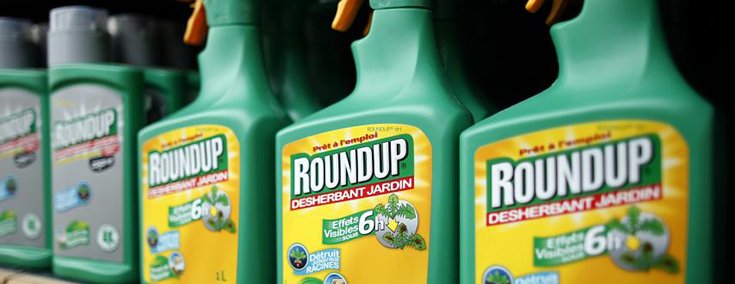France Says “Glyphosate Could Be Carcinogenic to Humans”

First the World Health Organization’s International Agency for Research on Cancer (IARC) deemed glyphosate, the main component in herbicides such as Round Up, a ‘probable carcinogen.’ Then, California’s EPA announced that glyphosate-products would adopt a cancer label. Now, France’s Agency for Food, Environmental and Occupational Health & Safety (ANSES) suggests that glyphosate is likely a category 2 carcinogen, meaning it is cancerous to human beings.
ANSES believes the classification of glyphosate should be rapidly reviewed by the European Chemicals Agency.
Specifically in question within Round Up’s formulation is a co-formulant used in many glyphosate preparations called tallowamine.
ANSES says it will conduct an immediate reassessment of the marketing authorizations for preparations combining glyphosate and tallowamine.
ANSES received a formal request to investigate the hazards posed by glyphosate to human health after the IARC released its study.
The Agency states that with current evidence, it is not possible to propose a classification in Category 1A or 1B (respectively, known or presumed to be carcinogenic to humans, CLP Regulation), but that glyphosate could be classified in Category 2 (substances suspected of being carcinogenic to humans, CLP). It is upon this premise that ANSES feels that the classification of glyphosate deserves expeditious review by the European Chemicals Agency (ECHA).
It isn’t just the active substance, for once, drawing attention. Co-formulants found in glyphosate preparations, tallowamine in particular, are raising concerns. The Agency will review glyphosate-based herbicides as well as conduct an immediate reassessment of the marketing authorizations for preparations combining glyphosate and tallowamine.
This means that Monsanto’s best-selling Round Up herbicide may be banned in France faster than you can say “French fried.”
Currently, glyphosate, the active substance in Monsanto’s Round Up, is used widely in France and other parts of Europe. Annual tonnage used varies between 1264 tonnes and 2055 tonnes from 2008 to 2014.
Every ten years, a plant ‘protection’ substance must be reviewed by EFSA, with Germany (BfR) as the rapporteur Member State. The conclusions of the BfR’s expert assessment, which will serve as the basis for the vote by the Member States on whether or not to re-approve the active substance, recommend establishing a threshold for acute toxicity.
Related: Global Ban of Glyphosate Called for in Portugal
This will make it harder for glyphosate to pass with Grade “A” marks.
The Agency’s analysis indicates that:
- “the level of evidence of carcinogenicityin animals and humans is considered relatively limited and cannot be used to propose a classification in Category 1A or 1B (respectively, known or presumed to be carcinogenic to humans) in application of the criteria of Regulation(EC) No 1272/2008 (CLP);
- in view of the limited level of evidence, the substance could arguably be classified in Category 2(substances suspected of being carcinogenic to humans, CLP), without the Agency being in a position to take a decision in the absence of a detailed analysis of all the studies.
- In light of these results, the Agency believes that the classification of glyphosate should be rapidly reviewed by the European Chemicals Agency (ECHA).
- In addition, besides the active substance and given the exposure to preparations and the concerns raised about the co-formulants, the Agency is continuing its work through the establishment of a Working Group on the risks associated with the co-formulants found in all plant protection preparations, in particular for amateur use. The work will focus on glyphosate-based formulations as a matter of priority.
- Furthermore, given the recent issues raised by EFSA concerning tallowamine, the Agency will conduct an immediate reassessment of the marketing authorisations for preparations combining glyphosate and tallowamine.”
Even as a ‘probable carcinogen’ the world is DONE with glyphosate and Round Up formulations of all kinds.
Source:
Featured image source: NewsWeek / REUTERS/CHARLES PLATIAU
